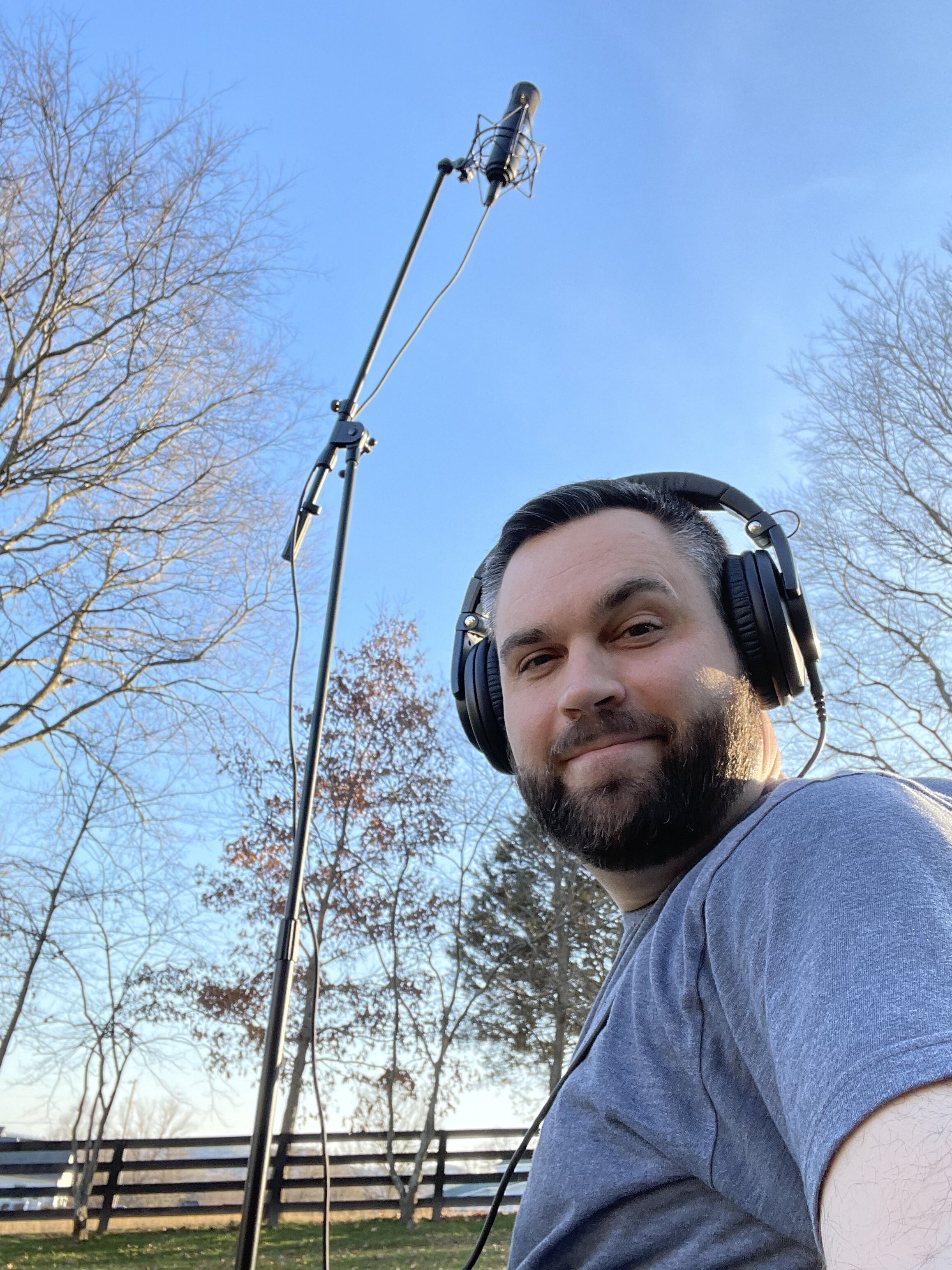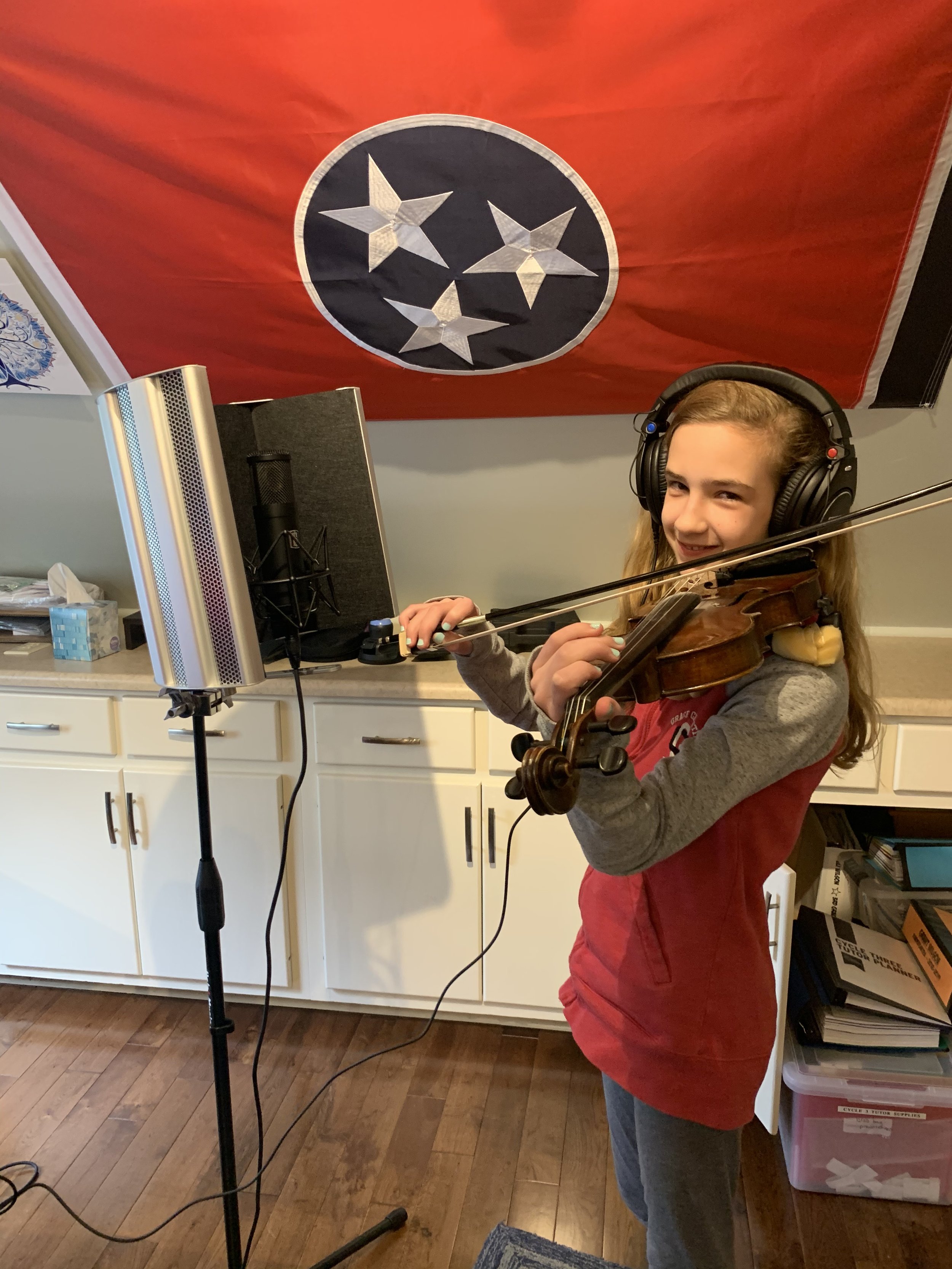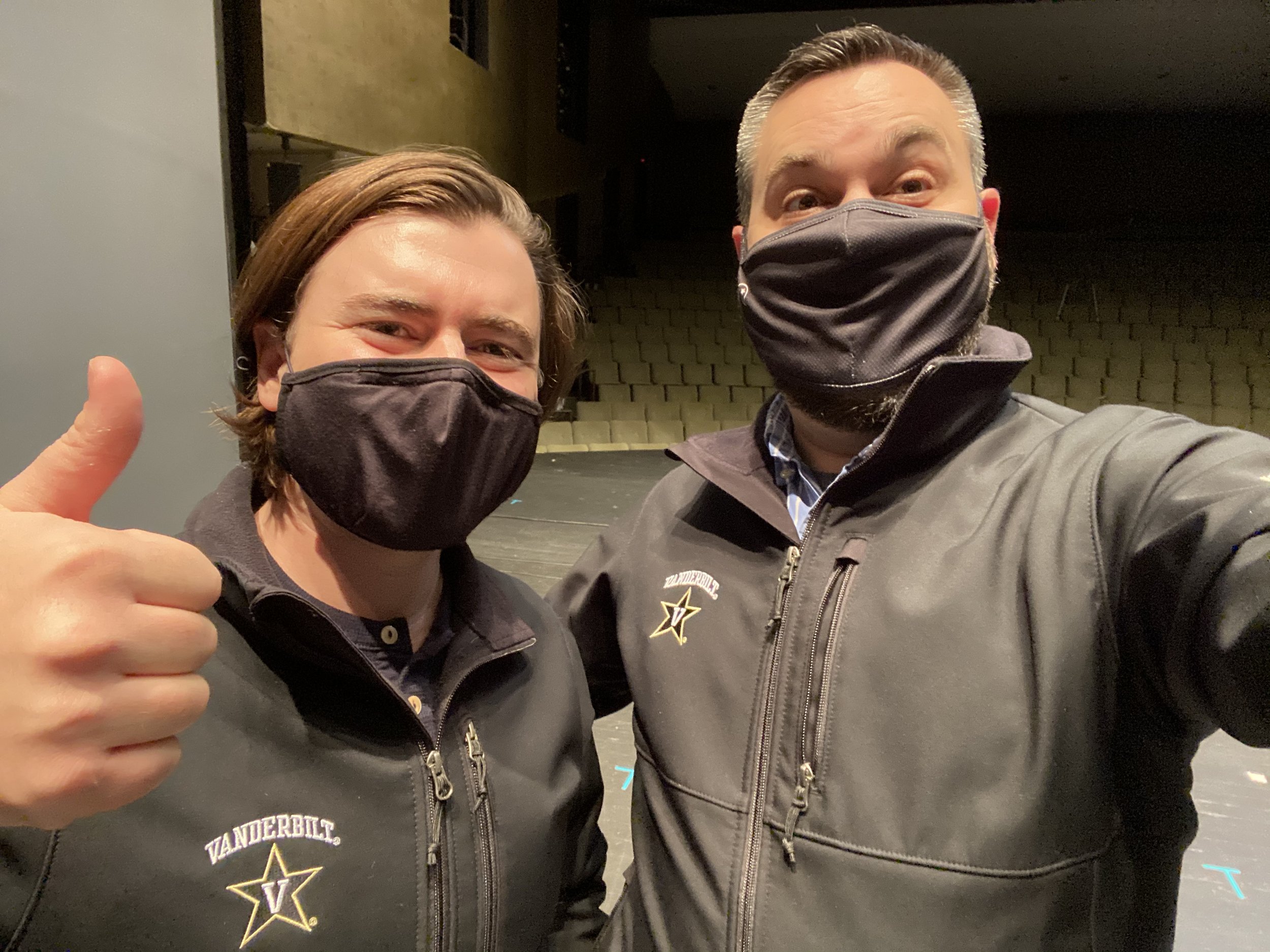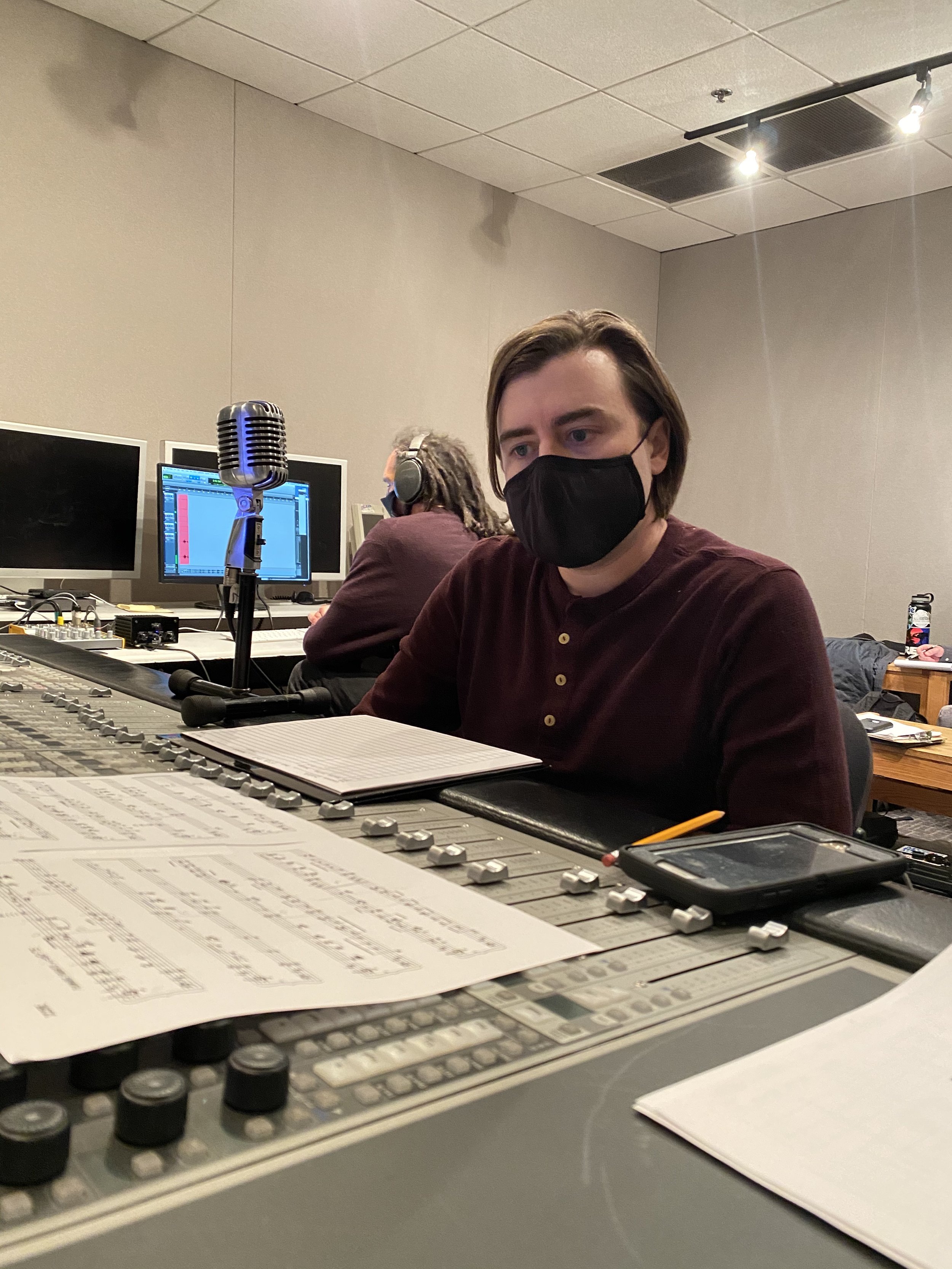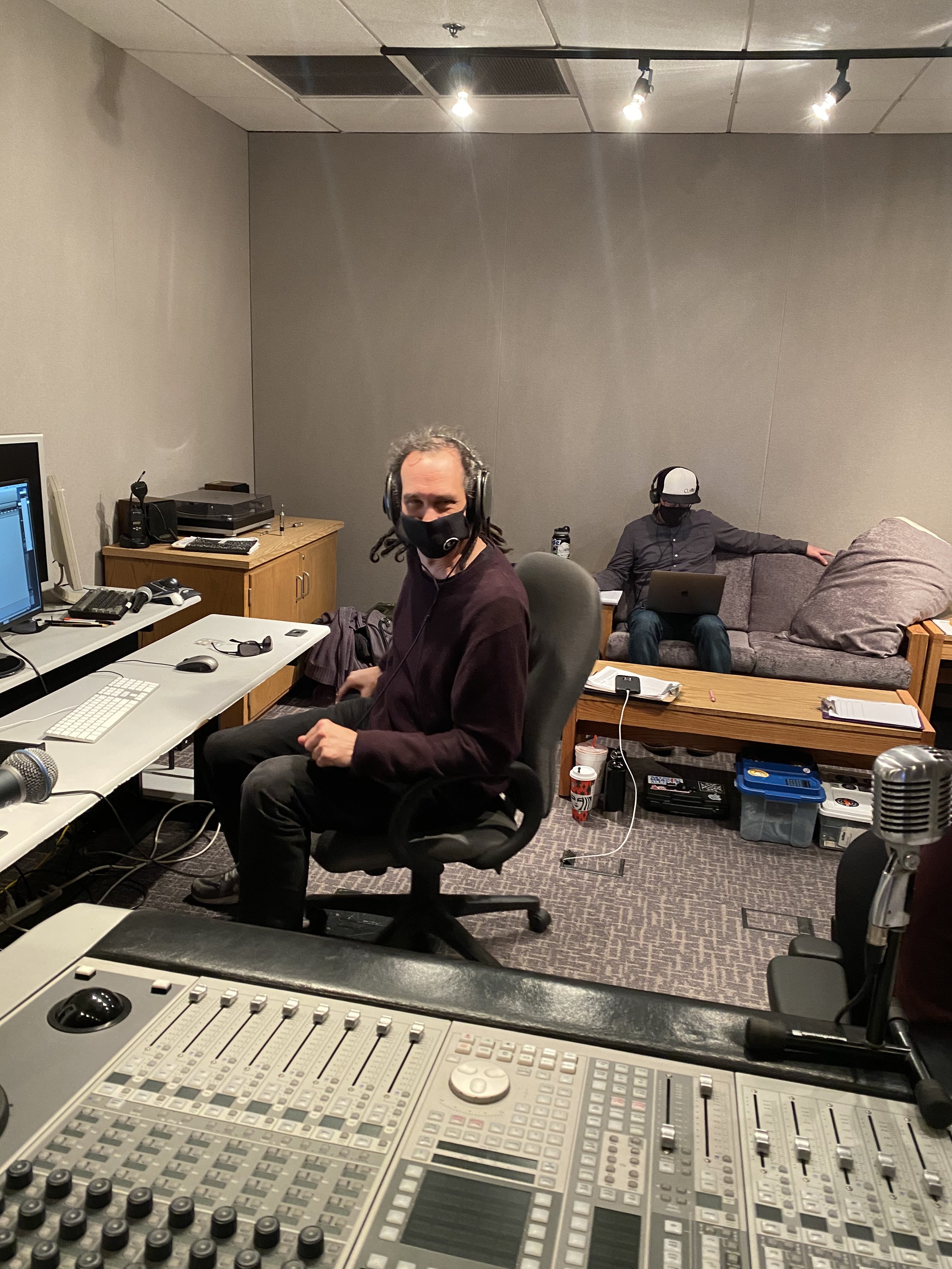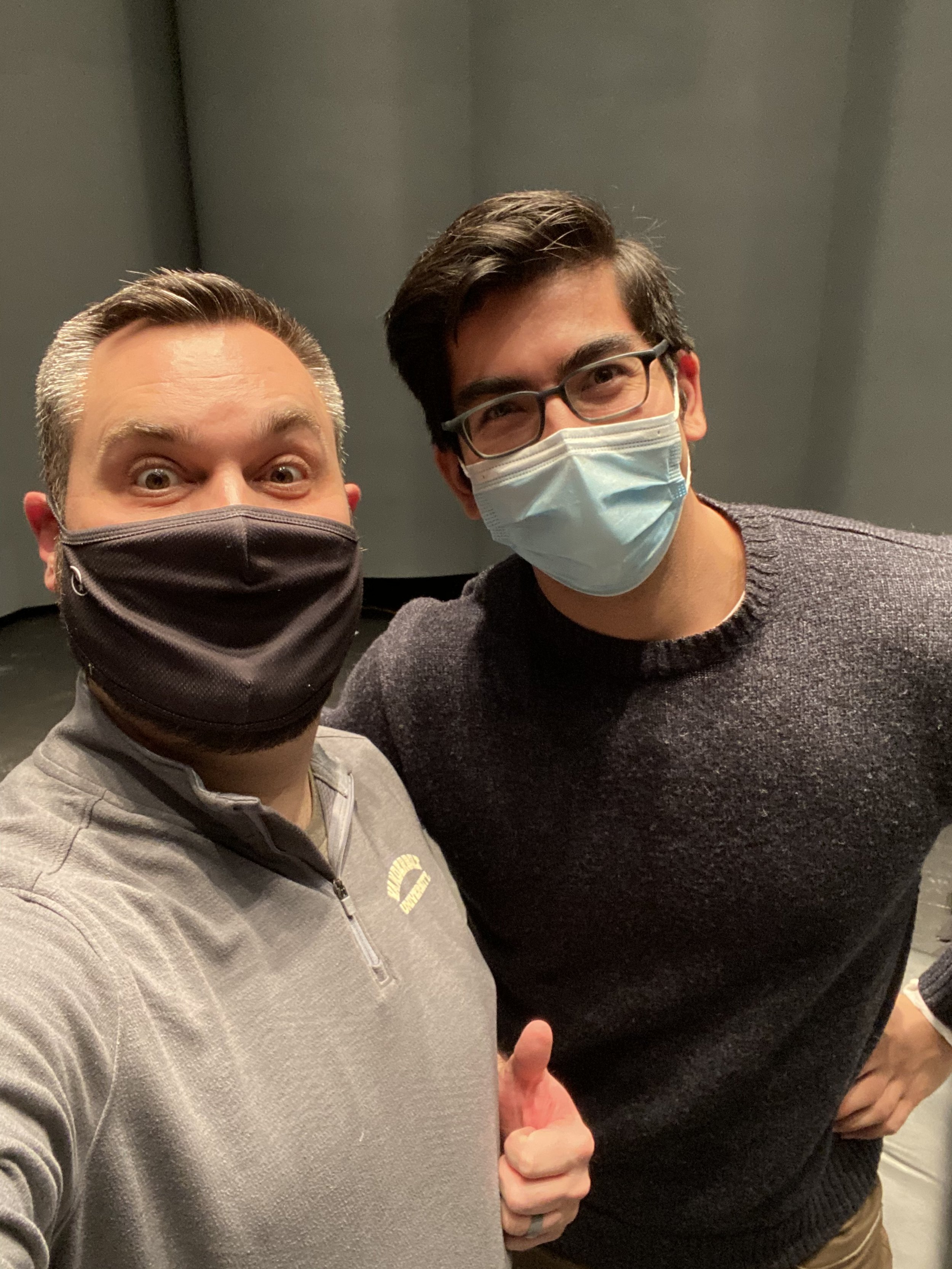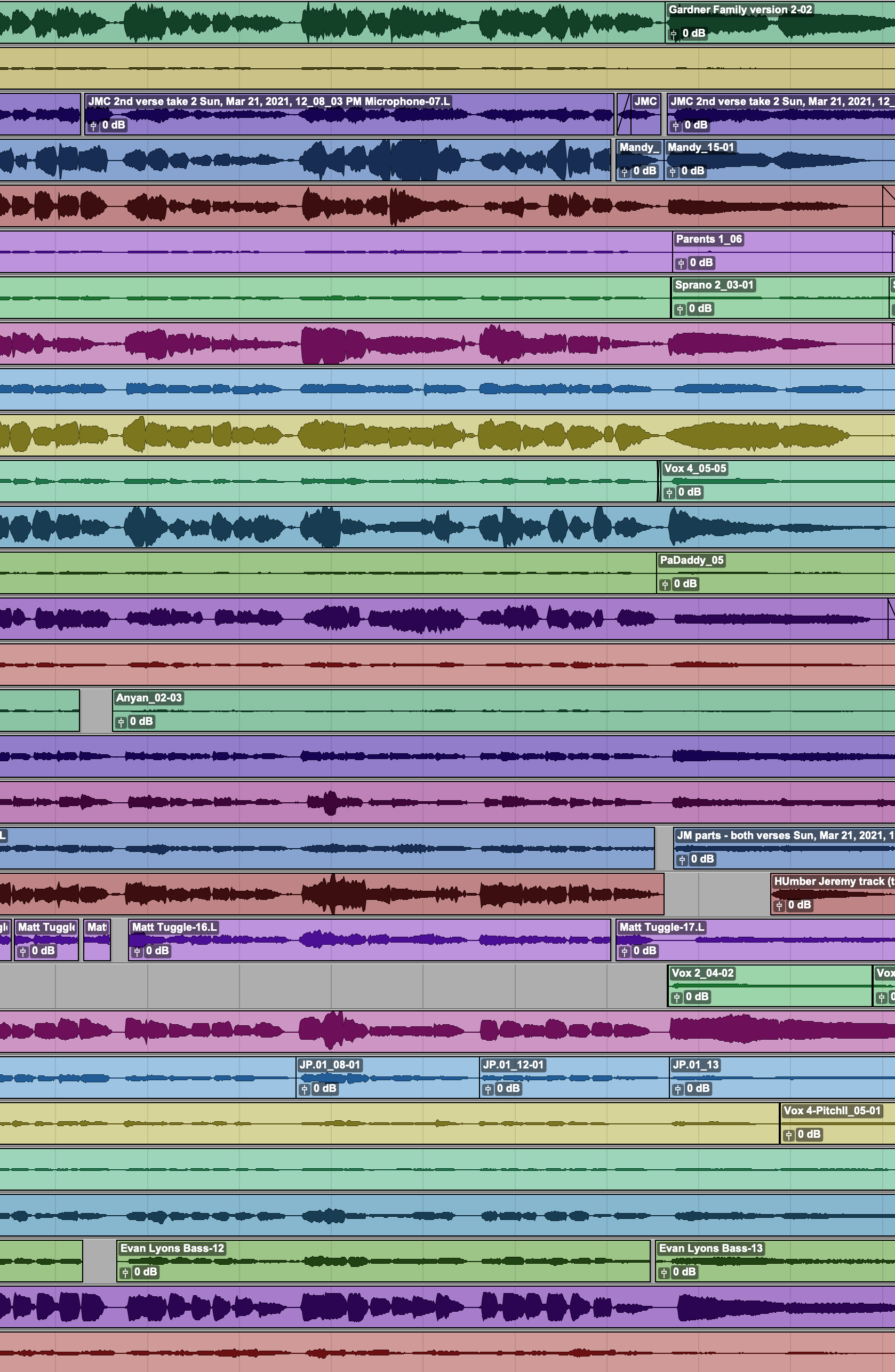For the Beauty of the Earth
This gorgeous artwork is by Stephen Crotts
My second solo album is called For the Beauty of the Earth and was released on Earth Day in 2021
Recording and releasing an album in the middle of a worldwide pandemic is not an easy task. That’s why the album features mainly works recorded by two people: me and pianist/composer/genius David M Rodgers. It’s also why the emotional center of the album is gratitude. More on that below.
The Music
There are 5 main works and 5 versions of the famous hymn tune, For the Beauty of the Earth, which ties the project together under a common theme of gratitude.
Each piece on the album is meant to express gratitude for a different part of the human experience. Some ideas are directly from the lyrics of the hymn, and others are inspired by the content of the works themselves.
-
The opening track is a simple solo trombone statement of the hymn tune, overlayed with the sounds of nature recorded in my backyard on a beautiful Spring afternoon.
In an unexpected turn of events hymn tune is interrupted by the first main work, aptly titled Vicissitudes
-
A vicissitude is an “unexpected turn of events”, and in recording Vicissitudes I want to express my gratitude for those times in my life where thing’s went very differently than I expected. Some of those moments were cause for celebration, such as winning my position in the Vienna Philharmonic. Other moments have not been pleasant or fun to live through, but each vicissitude in my life story has resulted in something good. Through them all, I have grown, learned, or gained appreciation for something I had previously taken for granted.
Here’s what Greg says about the piece:
The piece was commissioned by a consortium of Timothy Higgins, Nicole Abissi, Peter Ellefson, Stephen Lange, Steven Menard, Jeremy Moeller, Colin Williams and Jeremy Wilson, and premiered on June 12, 2015 by Stephen Lange and Deborah Yasutaki at the Cleveland Trombone Seminar.
A vicissitude is defined as “a change of circumstances or fortune, typically one that is unwelcome or unpleasant”. Throughout this piece, Turner includes several unexpected twists and turns, from extended performance techniques, to rapid changes of tempo and style, to the fascinating sounds of sympathetic resonance in the piano strings during the cadenza. The piece begins and ends around the key center of D, but with some truly surprising dissonances and extended harmonies that will raise eyebrows in one moment and bring a smile to your face in the next.
W. Gregory Turner's music has graced projects across all media, from feature films and television to CGI movies, videogames and apps. A composer of immense versatility, as well as a confessed technology junkie, Turner's love of all things orchestral coupled with his experience in an ever-increasing list of genres give him the ability to effortlessly move between projects as diverse as psychological thrillers and children's fantasy. His writing encompasses music for symphony orchestra, big band, a cappella choirs and vocal groups, as well as digital orchestrations in his state- of-the-art recording studio.
In his concert music, Turner's voice showcases a broad musical palette - splashes of the tones, textures and rhythms to which he has been naturally drawn, as well as the styles he has been called upon to absorb while working on a vast array of media projects. His musical aesthetic paints a rich canvas with an unwavering sensitivity and uncommon emotional depth through the use of melody, space and texture. His is music to move the listener, to touch them.
Learn more about the composer and purchase the sheet music at wgregoryturner.com
-
This solo piano setting of the hymn tune was written and performed by David M Rodgers. I felt that after the craziness of the Vicissitudes ending, something gentle and calm would be a nice counterbalance.
-
Tresin Terra is a play on the latin phrase meaning “three for Earth”. This piece is pretty clear about expressing thanks for the beauty of nature, for this amazing planet we all call home, and for the ways that nature nourishes us, both physically and spiritually.
Tresin Terra began as a much shorter work, originally composed for my former student, Josiah Williams. I heard Josiah premiere the work on his senior recital and absolutely fell in love with it. I approached the composer, David Rodgers, also an alumnus of the Blair School, and asked if he might consider expanding the original work into a three-part suite. He agreed, and David and I were able to premiere the new expanded work at the 2017 International Trombone Festival in Redlands, California.
This piece has some challenges, not the least of which is David’s creative use of ostinato rhythms and his love of the key of G-flat! But the technical challenges of this piece are SO worth the effort. The big thing to remember for anyone who performs Tresin Terra is that there is a TON of freedom and leeway for creativity and personal expression in the work. The almost complete absence of articulation markings in the trombone part is intentional. I chose to use a modified soft jazz articulation throughout, but performers should feel free to experiment. The opening cadenza/improvisation is another area where someone could really make the piece “theirs”, as are the many pauses of the 2nd “movement.
David says: “Tresin Terra is a programmatic work for trombone-piano duo, inspired by the beauty in the way nature creates out of necessity. This work combines elements of composition and improvisation in a fluid musical medium ideal for performers who revel in the energy of creating and reacting in the moment.”
Learn more about David and purchase the sheet music at davidmrodgers.com -
I had been listening to a lot of Jacob Collier in 2020. Hadn’t we all? I asked David to do a trombone overdub version of the hymn tune, and I told him I wanted it to have interesting and weird Jacob Collier-style harmonies. He nailed it. In total there are 12 trombone parts, with notes ranging from pedal D to the c-flat above the treble clef staff. Challenging, but fun!
-
On the surface, Ryan Middagh’s wonderful loop station work Blue: A Broken Glass Bottle does not seem to be a piece about gratitude. It’s dark, mesmerizing, and influenced by minimalism, rock guitar licks, and of course… the blues. There are moments of chaos and moments of serene calm, and about halfway through a primal scream brings the whole thing to a screeching halt. But then a section in F Major follows, and I resonate strongly with the defiant optimism and courage portrayed in that moment. For me, this piece is all about resilience, choosing joy over despair, and gratitude for the smallest rays of light that can burst through the darkness.
Ryan says: The piece was commissioned by Jeremy Wilson in the spring of 2017. This work for trombone and loop station is an introspective reflection of a personal journey I have been undertaking for the past several years, and a journey I am still on. The medium of this piece, though initially a challenge, provides a perfect canvas to musically communicate the ideathat real and meaningful change takes time. The opening and ending melodic material gives the work its title, and in the opening is intended to represent an internal struggle and an acknowledgement of the necessity to change. When this material returns at the conclusion of the work, it represents resilience, and a reminder of where this journey began, and hoping that the change for the better will continue every day. Very often in music, we have the privilege of collaborating and conversing with others, but in this work the musical conversation is internal. ~ Ryan Middagh
Learn more about the composer and purchase the sheet music at ryanmiddagh.com -
For this setting of the hymn tune, I told David “I’m thinking fast, multi-meter, crazy rhythms”. Once again, he delivered.
-
The three movements of Secure. Contain. Protect. are inspired by stories from the SCP Foundation, a fictional extra-governmental organization dedicated to securing, containing, and protecting numerous paranormal entities. Created by a thriving online community of writers, each “SCP” is a form of short fiction that describes the physical and mysterious properties of the entity, typically in a dry, bureaucratic tone. By including this quirky, inventive, and playful work straight from the brilliant mind of James M David, I hope to express gratitude for stories, fun, and the gift of imagination.
The composer says:
This sonata for trombone and piano was inspired by three of these remarkably creative stories.
SCP-882 “Machine God” describes a sentient collection of metallic gears that compels humans to add more and more components to its mass. Anyone near the entity will experience auditory hallucinations of ticking, grinding, and clicking sounds that gradually increase in intensity. The object is depicted musically as a persistent ostinato built by layer upon layer of polyrhythms and quick darting motives.
SCP-1342 “Future Voyager” is an object that is nearly identical to the Voyager I space probe launched in 1977. However, the SCP was constructed in the year 42,412 AD by a civilization hundreds of light years from Earth. Like Voyager, it contains a “golden record” that holds a message for humanity. The civilization that built it found Voyager and learned much of humanity’s achievements in art and science. The two cultures flourished from their communications across the stars. As technology improved and resources dwindled, they eventually clashed and humanity almost completely wiped out its rival. The few survivors sent a replica of Voyager into the distant past to warn humanity of its future and remind them of the music they shared. Famously, the Cavatina from Beethoven’s String Quartet no. 13 was included on the original “golden record” and is quoted in the movement.
SCP-682 “Hard-to-Destroy Reptile” is a large, hyper-intelligent reptilian creature that can withstand and adapt to almost any force or environmental hazard. One of the oldest and most beloved SCP’s, it has become something of a mascot for the author community. The big lizard is given a raucous Latin dance that incorporates slide glissandi as well as reincorporating the previous movements’ themes into its sturdy frame. ~ James David
Learn more about the composer and purchase the sheet music at jamesmdavid.com
-
Barfield’s Red Sky is a representation of the Big Bang Theory. By closing out the album with this epic work, I wanted to evoke the wonder and awe that I feel when thinking about the vastness of space and how it all came to be. I am thankful for the beauty of the stars, planets, and galaxies, and for the gift of human consciousness that allows us to ponder the great mysteries of life and our place in the universe. I was fortunate to be a part of commissioning the piano reduction for this wonderful piece, and I was happy to be able to include it on the album.
Learn more about the composer at anthonybarfield.com
-
The album’s final track features the only traditional presentation of the title hymn with lyrics. On the first verse, my son Eli is playing piano while the rest of our family sings.
On the last verse, we are joined by over 30 friends and family members, all giving thanks for “friends on Earth and friends above”. As the virtual ensemble sings its final Amen, the bird songs recorded in my back yard return to bring the album to a close.
Here are the folks who contributed to this deeply personal and meaningful collaboration:
Christopher Born
Sherrye Brown
Joe and Megan Christian and Family
Chad Ellis
Brian Entwistle
Kim Ford
Mollie and Thomas Gardner and Family
Liam Glendening
Jason Henderson
Matt Herrmann
Jon Humber
Ben McIlwain
Jeremiah Kamtman
Evan Lyons
Anyan Parsons
Mandy Parsons
Joy Patrick (violin)
Ben and Kristin Polk and Family
JP Robinson
Dave Stovall
Greg Swanson
Rhonda Swanson
Matt Tuggle
Matthew Tyler
Karen Waters
Josiah Williams
Jeremy and Kristi Wilson and Family
Renee Wilson
Ron Wilson
There’s a whole YouTube playlist with music videos from the album
Production Info
Recorded by Kevin Edlin and Produced by Nick Laufer.
Just like on my debut album, Perspectives, I was so fortunate to have Nick Laufer and Kevin Edlin in the booth for this project. They always do incredible work, and I am so thankful for their dedication and artistic integrity.
Edited, Mixed, and Mastered by Jeremy Wilson and David Rodgers.
UNLIKE my debut album, I wanted to try to do the post-production work myself. It was a humbling and exhilarating experience, but I did it, with TONS of help from David. He helped me out immensely with quite a bit of editing and mastering, and he had so much helpful advice and was so generous with his time, talents, and plug-ins.
Recorded at Vanderbilt University in December 2020.
I was so fortunate to be granted permission to record the album at Ingram Hall at Vanderbilt University Blair School of Music, even with a massive COVID surge going on. We kept the crew small, distanced, and safe through the whole process, which was completed over 3 days from December 16-18.


